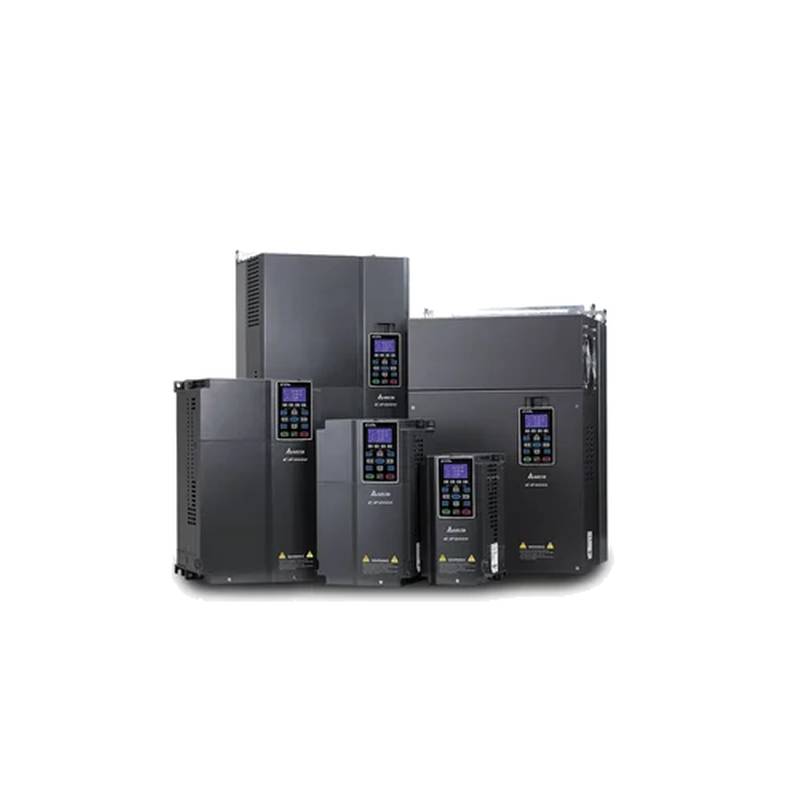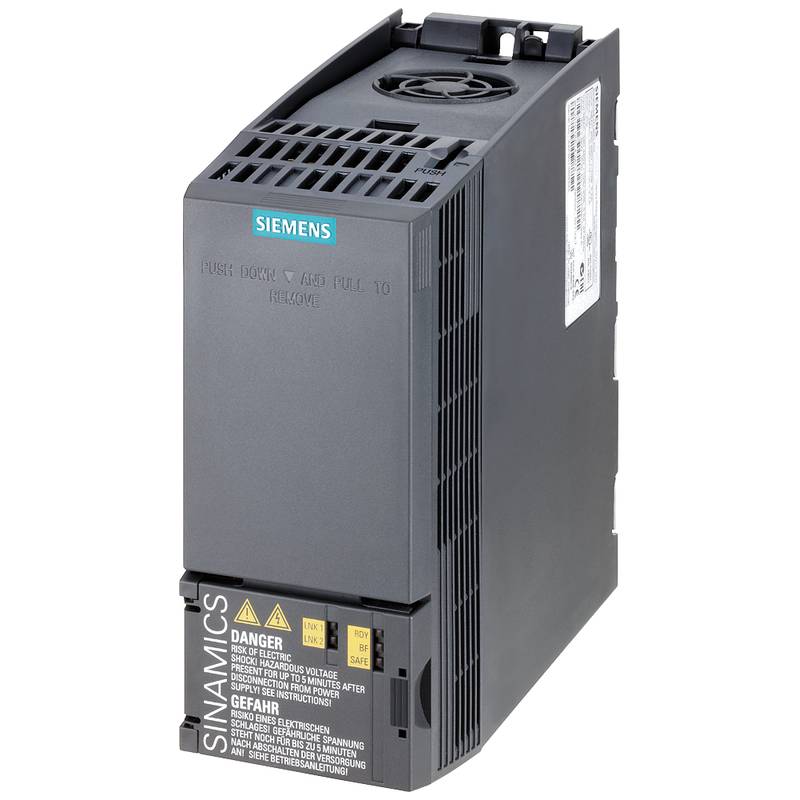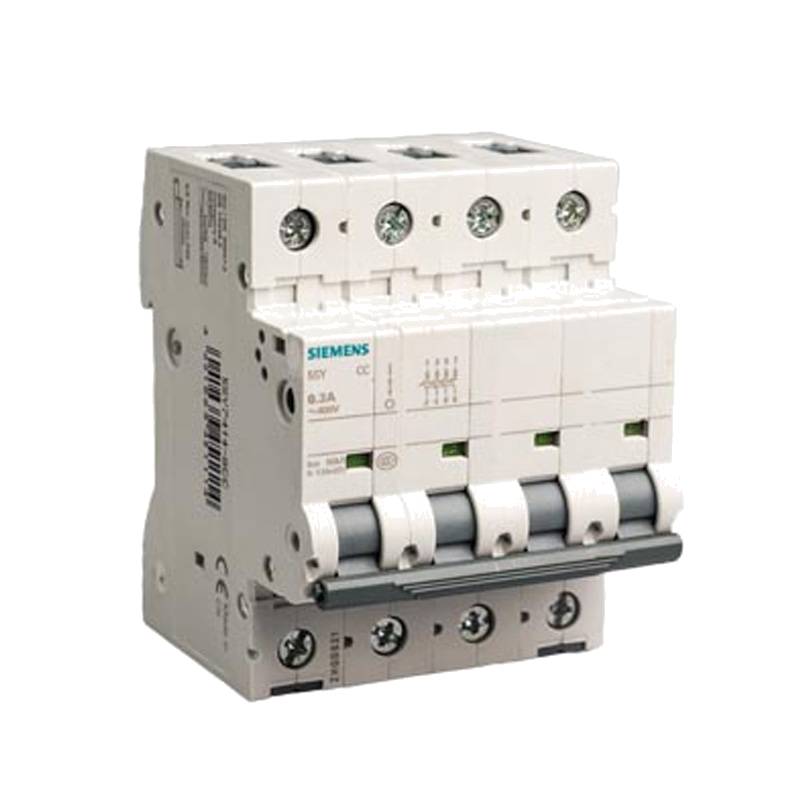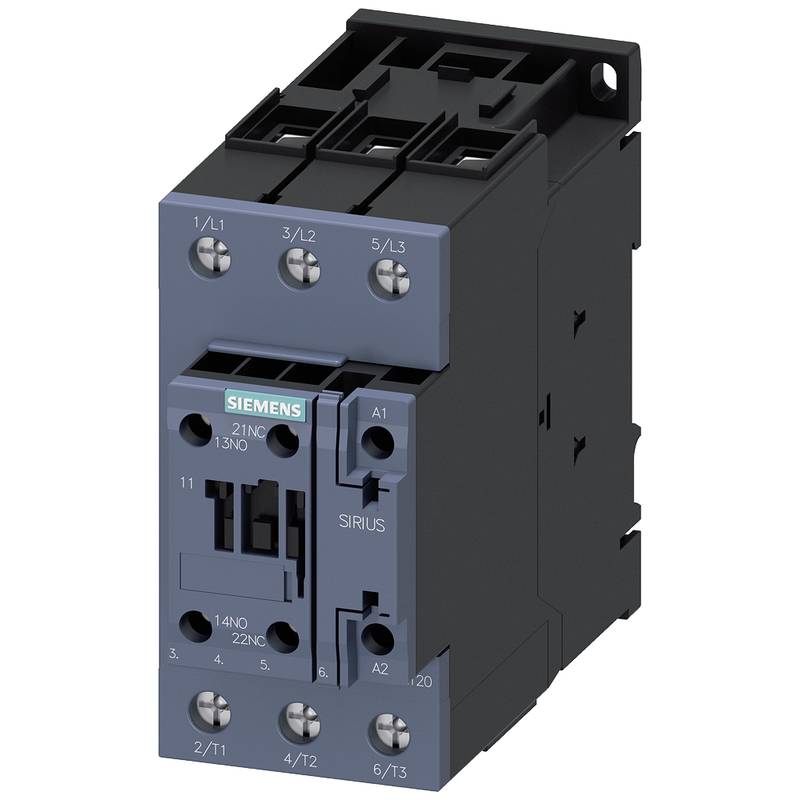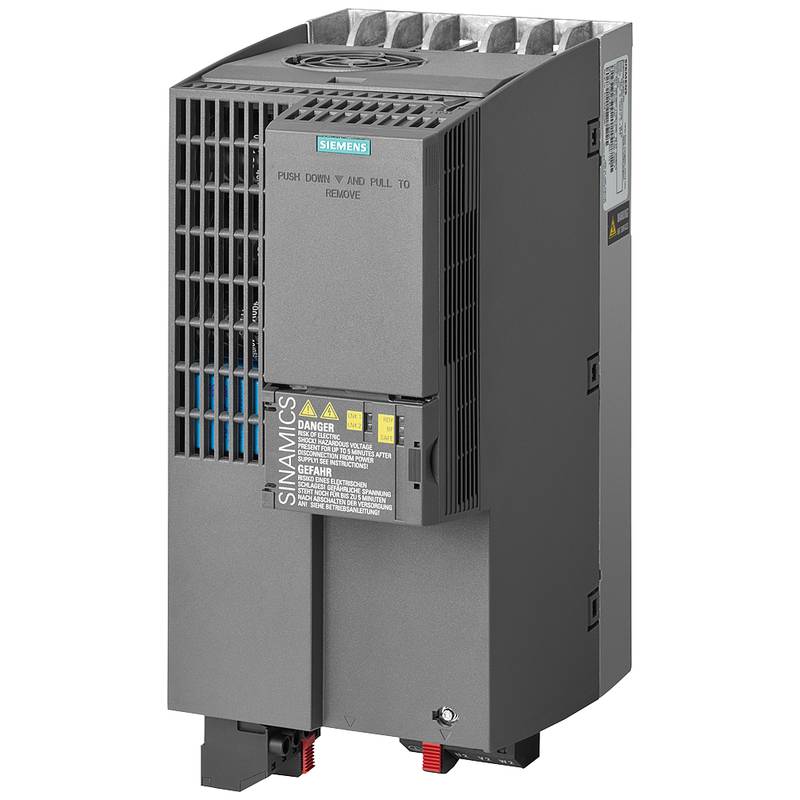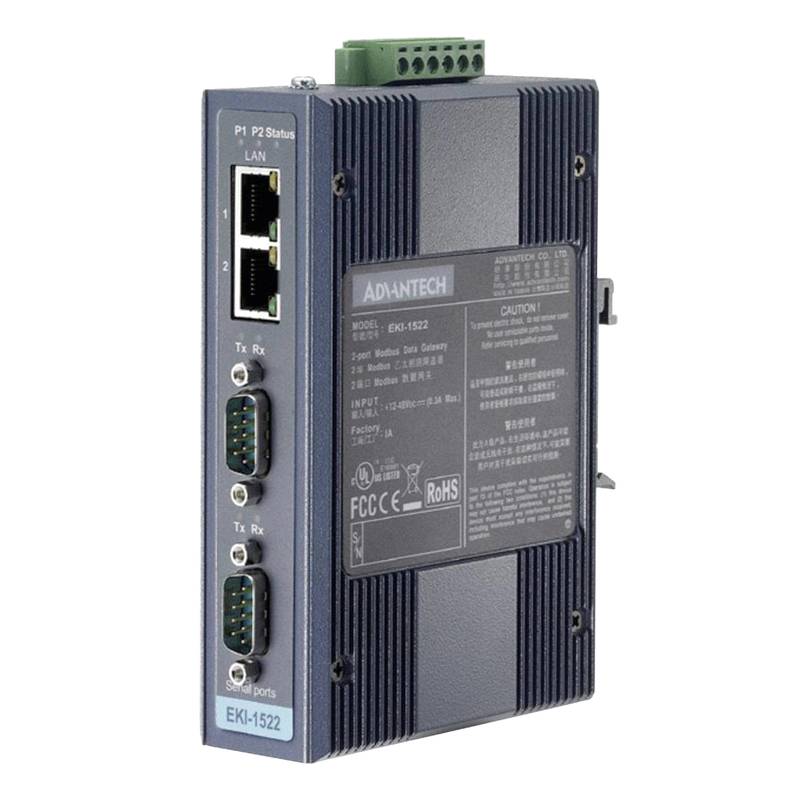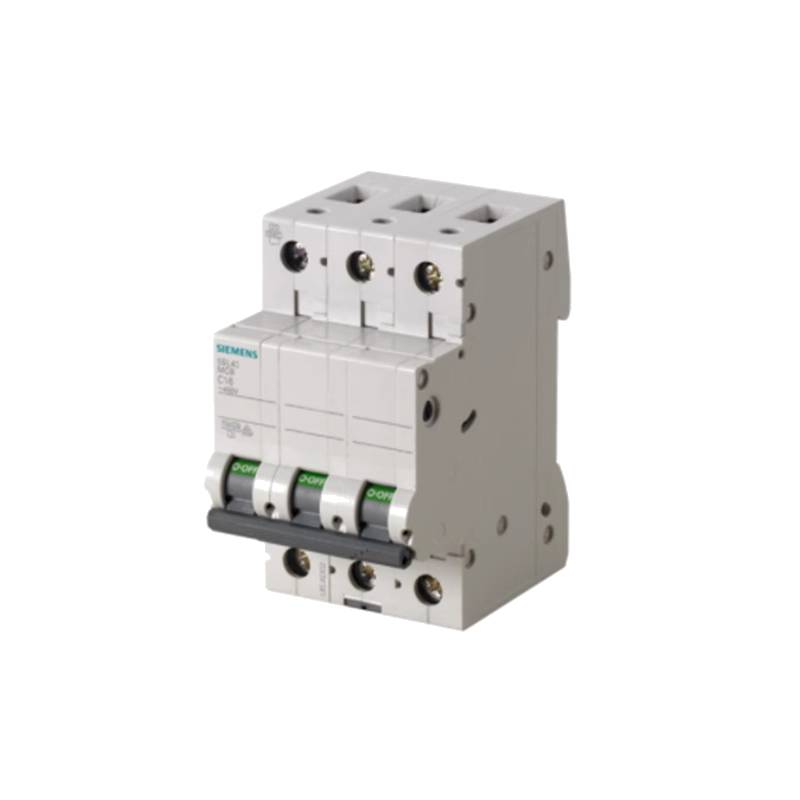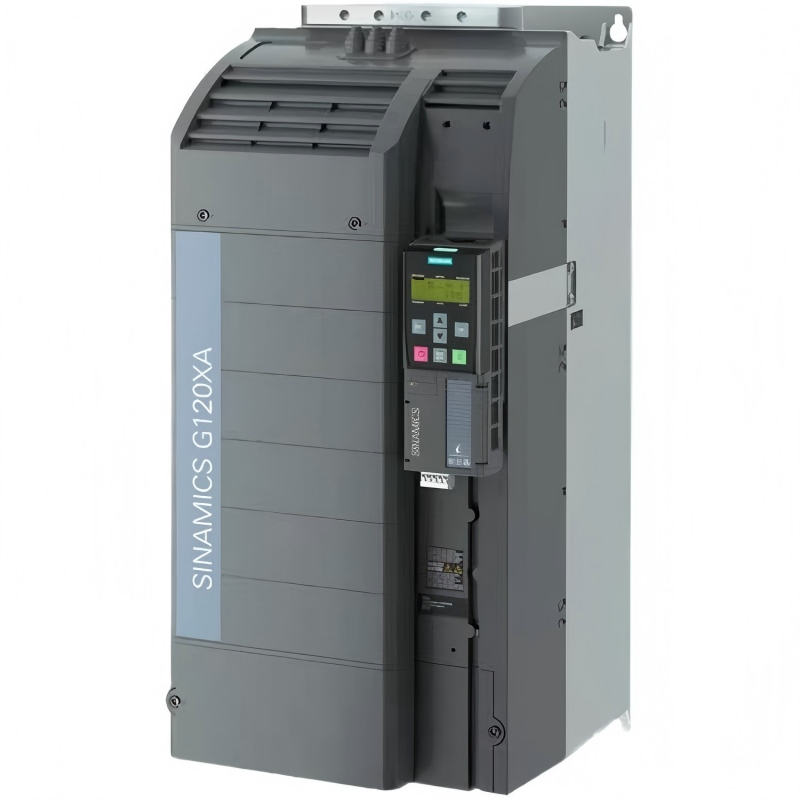
The Delta VFD1100CP43A-21 CP2000 Heavy Industry Vector Control Drive is a powerful and versatile solution designed for demanding industrial applications. This 220A, 110kW drive excels in providing precise motor control and robust performance across various heavy-duty sectors. Its advanced vector control technology ensures optimal torque and speed regulation, even under fluctuating load conditions. Key advantages include enhanced energy efficiency, improved process control, and increased equipment lifespan. With a focus on reliability and ease of integration, the VFD1100CP43A-21 is engineered to meet the rigorous demands of modern manufacturing and processing environments.
Product Specifications
| Parameter | Value |
| :--------------------- | :----------------------------------- |
| Model | VFD1100CP43A-21 |
| Series | CP2000 Heavy Industry Vector Control |
| Rated Current (Amps) | 220A |
| Rated Power (kW) | 110kW |
| Input Voltage | 3-Phase, 380-480V AC |
| Output Voltage | 3-Phase, 0-480V AC |
| Control Method | Advanced Vector Control |
| Mounting Type | Wall/Rack Mount |
| Protection Rating | IP20 |
| Dimensions (H x W x D) | 715mm x 400mm x 340mm |
Core Features & Market Positioning
The Delta VFD1100CP43A-21 distinguishes itself through its superior heavy-duty vector control capabilities, offering unparalleled precision in motor speed and torque management. This drive is positioned as a high-performance solution for industries where precise process control and reliable operation are paramount, such as in heavy machinery, metal processing, and large-scale material handling. Its advanced thermal management system ensures sustained performance even under continuous heavy loads, setting it apart from standard VFDs. Furthermore, the CP2000 series is recognized for its robust build quality and extensive feature set, catering to complex industrial automation needs.
Key Application Scenarios
This Delta drive is ideally suited for applications requiring high starting torque and precise speed regulation, including large pumps, fans, extruders, and conveyors in industries like mining, petrochemicals, and heavy manufacturing. Its vector control ensures smooth acceleration and deceleration, minimizing mechanical stress on equipment and optimizing production cycles. Users often seek this model for its ability to handle significant load variations and its compatibility with a wide range of motor types, enhancing its versatility in diverse industrial settings. The VFD1100CP43A-21 is a go-to choice for critical operations where downtime is costly and performance consistency is non-negotiable.
Practical System Integration Guidance
Integrating the VFD1100CP43A-21 into an industrial system involves careful consideration of wiring and parameter configuration. It supports multiple control modes, including voltage/frequency (V/f) and sensorless vector control, allowing for flexible setup based on application requirements. For optimal performance, ensure proper sizing of motor, cabling, and protective devices according to the drive's 220A rating and 110kW power output. The drive offers various communication options, such as Modbus, for seamless integration into SCADA and PLC systems, facilitating remote monitoring and control. Always adhere to local electrical codes and safety standards during installation.
Operation and Risk Mitigation
Safe operation of the Delta VFD1100CP43A-21 mandates adherence to all electrical safety precautions, including proper grounding and ensuring the drive is installed in a well-ventilated environment to prevent overheating. Familiarize yourself with the fault code list provided in the user manual to quickly diagnose and resolve operational issues. Common faults may include overcurrent, overvoltage, or motor overload conditions, often stemming from incorrect parameter settings or external system anomalies. Promptly addressing fault codes and performing regular maintenance will significantly mitigate operational risks and ensure uninterrupted performance.
Scalability & Long-Term Value
The CP2000 series, including the VFD1100CP43A-21, offers a degree of scalability and future-proofing through its robust communication interfaces and compatibility with Delta's broader automation ecosystem. This drive can be integrated into advanced IIoT platforms, enabling predictive maintenance and remote diagnostics, thereby enhancing long-term operational value and efficiency. Its modular design and comprehensive parameter settings allow for adjustments and optimizations as production needs evolve. Investing in this drive ensures a reliable and adaptable solution that can grow with your industrial automation strategy.
Frequently Asked Questions
What are the primary advantages of the Delta VFD1100CP43A-21?
This drive offers superior heavy-duty vector control for precise motor performance. It ensures exceptional torque and speed regulation even under demanding loads. The advanced design enhances energy efficiency and extends equipment lifespan.
It provides robust operational stability and reliability critical for industrial processes. Its ability to adapt to fluctuating load conditions sets it apart. This translates to improved productivity and reduced maintenance costs.
The VFD1100CP43A-21 is engineered for durability and ease of integration. It supports a wide range of applications requiring high starting torque. This makes it a versatile and long-term valuable investment.
How do I properly install the VFD1100CP43A-21?
Ensure the drive is mounted in a clean, well-ventilated area, away from excessive dust or moisture. Follow the wiring diagrams precisely, using appropriately sized cables for the 220A rating. Always disconnect power before beginning any installation work.
Verify that all control wiring, motor connections, and grounding are correctly terminated. Consult the user manual for specific recommendations on clearances and cable types. Proper installation is key to safe and efficient operation.
Commissioning involves setting essential parameters such as motor data, control method, and protective limits. Perform a low-speed test run before applying full load to verify correct operation. Review the manual for a detailed commissioning checklist.
What are common troubleshooting tips for this drive?
Check the display for any specific fault codes and refer to the manual for their meaning and solutions. Common issues include motor overload, overcurrent, or undervoltage faults. Ensure these are addressed by verifying motor specifications and load conditions.
Verify all power and motor connections are secure and correctly phased. Loose connections can cause intermittent operation or faults. Inspect for any signs of physical damage to the drive or connected components.
Parameter settings are crucial; incorrect motor data or control parameters can lead to poor performance or tripping. Resetting to factory defaults and reconfiguring critical parameters can sometimes resolve persistent issues. Always back up your settings before making major changes.
Can the VFD1100CP43A-21 be used with different types of motors?
Yes, the drive is designed to control various AC induction motors effectively. It supports both V/f control and sensorless vector control modes. This versatility allows it to be adapted to different motor characteristics and application needs.
Sensorless vector control provides excellent performance with standard induction motors, offering high torque at low speeds. Ensure the motor is rated appropriately for the drive's output voltage and frequency. Consult the manual for motor compatibility charts.
For specialized motors, verify compatibility with the drive's control algorithms. The drive's extensive parameterization allows for fine-tuning. This ensures optimal performance across a wide spectrum of motor types encountered in heavy industry.
What is the power and current rating of the VFD1100CP43A-21?
The drive has a rated power output of 110 kilowatts (kW). Its maximum continuous current rating is 220 amperes (A). This robust rating allows it to handle demanding industrial loads effectively.
The 110kW capacity means it can power large machinery such as heavy-duty pumps, fans, and conveyors. The 220A current handling capability ensures it can deliver sufficient power under significant starting torque requirements. This makes it suitable for continuous operation in tough environments.
When selecting this drive, ensure your motor's nameplate current and power ratings are within or below these specifications. This ensures safe operation and prevents overloading the drive or motor. Always consider peak load demands during selection.
How does vector control benefit heavy industry applications?
Vector control provides precise independent control over motor speed and torque. This allows for smooth acceleration and deceleration, reducing mechanical stress on machinery. It also enables maintaining precise speeds under varying load conditions.
In heavy industry, this translates to improved process accuracy, such as in precise positioning or material feeding. It enhances operational efficiency by optimizing motor performance and reducing energy consumption. Consistent torque delivery is vital for large, inertia-heavy loads.
Applications like crushers, extruders, and large mixers benefit significantly from the stable torque output and dynamic response offered by vector control. This leads to higher product quality and reduced equipment wear, increasing overall productivity and uptime.
What communication protocols does the VFD1100CP43A-21 support?
The drive typically supports standard industrial communication protocols like Modbus RTU. This enables seamless integration into existing automation systems, including PLCs and SCADA networks. It allows for remote monitoring, control, and parameter adjustment.
Other optional communication cards may be available, extending compatibility to protocols such as Profibus or DeviceNet. These options offer flexibility for integrating the drive into diverse control architectures and plant setups. Always check for specific protocol support for your intended system.
Effective communication is crucial for modern industrial automation, facilitating data acquisition and diagnostics. This drive's communication capabilities enhance its utility in smart manufacturing environments and IIoT applications. It allows for centralized control and performance analysis.
What is the input voltage range for this Delta drive?
The VFD1100CP43A-21 is designed to operate on a three-phase AC power supply. The standard input voltage range is typically between 380 and 480 volts. This is a common voltage level in industrial facilities worldwide.
It is important to ensure your facility's power supply matches this requirement. Operating the drive outside its specified voltage range can lead to damage or improper function. Verify the local power grid specifications before installation.
The drive's ability to accept this voltage range makes it suitable for most heavy industrial power distributions. Always use appropriate surge protection and power conditioning if the supply quality is questionable. This ensures reliable operation and longevity.
What safety features are incorporated into the VFD1100CP43A-21?
This drive includes multiple protection functions to safeguard the motor and itself. These typically encompass overcurrent, overvoltage, undervoltage, overload, and overheat protection. These features help prevent damage from electrical disturbances or operational issues.
Many Delta drives also feature a Safe Torque Off (STO) input. This is a critical safety function that immediately removes torque from the motor when activated, ensuring personnel safety during maintenance or emergency stops. Always integrate STO with appropriate safety logic.
Proper installation and adherence to operating guidelines are paramount for safety. The drive's IP20 rating means it requires enclosure protection against direct contact and foreign objects. Follow all safety standards during installation and operation.
How can I optimize energy efficiency with this drive?
Utilize the drive's variable frequency control to match motor speed to the actual load demand. This significantly reduces energy consumption compared to fixed-speed operation, especially for pumps and fans. The drive's built-in energy-saving features further enhance efficiency.
Proper parameter configuration is key; enable the drive's energy-saving modes and optimize acceleration/deceleration ramps. Select the most appropriate control mode (e.g., V/f or vector control) for your application to maximize efficiency gains. Regular motor maintenance also plays a role.
The drive's ability to precisely control torque and speed ensures the motor operates at its most efficient point. Monitor energy consumption through the drive's display or communication interface to identify further optimization opportunities. This proactive approach yields substantial cost savings over time.














